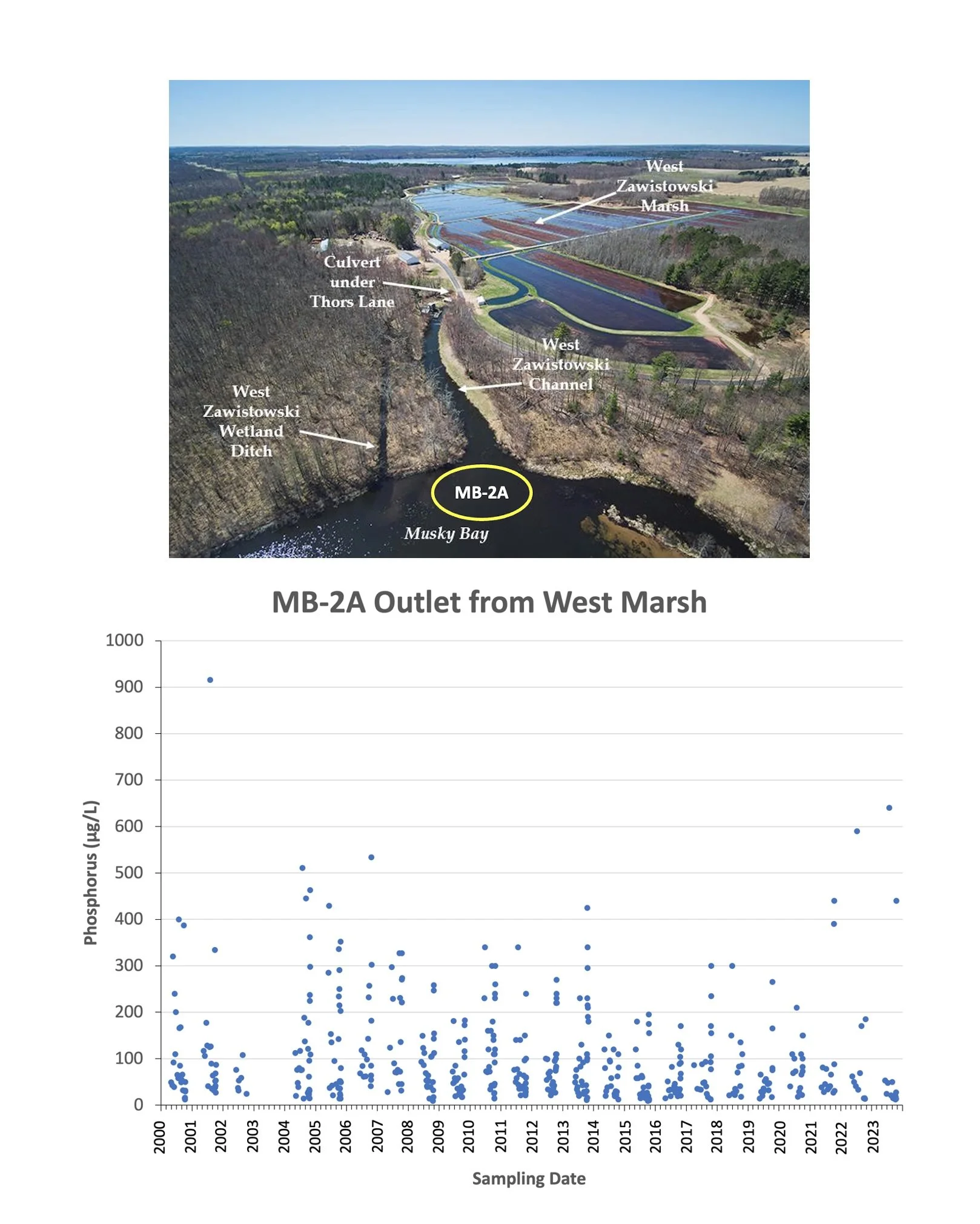Cranberry Bogs
There are five cranberry marshes totaling 169 acres located within the direct drainage areas of Musky Bay, Stuckey Bay, and the West and East Basins. Additional cranberry bogs totaling 111 acres are located in the direct drainage to Sissabagama Lake, the eastern-most lake in the Upper Couderay River watershed.
In 2004, the State of Wisconsin, along with 12 property owners on Musky Bay initiated litigation against William Zawistowski claiming that his cranberry operation was creating a private and public nuisance. This pitted Wisconsin’s "Right to Farm Act” against the claim of an alleged nuisance on a public waterway.
The plaintiffs lost the Zawistowski case due solely to limitations in Wisconsin’s nuisance statutes. But in his decision, Sawyer County Circuit Court Judge Anderson fully supported the plaintiffs’ contention that Musky Bay had been badly damaged by discharges from Zawistowki’s bog as stated in the concluding paragraph of his decision, “…Zawistowski can no longer hide behind a veil of self-imposed ignorance to the effects his cranberry operation is having on Musky Bay. His actions are beginning to interfere with a protected right, and the public is not without the ability to intervene, should the interference reach unreasonable levels. While Zawistowski may continue his operations as is, he does so at his own risk.”
The annual phosphorus load for LCO is a little over 5,000 lbs. COLA and the LCO Tribe have determined that the phosphorus load should be reduced by 1,427 lbs to preserve LCO’s water quality, and cranberry bogs represent 592 (41%) of those lbs (TMDL, table 10 ). This will be a difficult task without the cooperation of the growers since cranberry production is mostly unregulated at local, regional, state, and federal levels.
Phosphorus concentrations in 2022 increased from the east to the west across LCO’s Major Basins. The closer to Musky Bay, the higher the phosphorus.
In early 2000, the LCO Conservation Department began collecting water samples from locations near the two discharge channels of the Zawistowski east and west cranberry marshes (designated as MB-2 and MB-2A, respectively). The figures provided here display the phosphorus concentrations at each sampling location and date from 2000 through 2023. (The hash marks for sampling date are spaced at 2-month intervals.)
Most of the highest concentrations occur during the cranberry harvest period from mid to late-October. However, high phosphorus concentrations also occur at several other times throughout the growing season corresponding to the need to flood marshes to protect cranberries from cold weather, control insects/diseases/weeds, and apply fertilizers/herbicides.
Click on photo for larger image.
An irrigation return flow system was installed on the eastern marsh in 2015. It may have taken a few years, but it seems that at least since 2018, phosphorus concentrations have decreased at the MB-2 sampling site (see diagrams). However, recent phosphorus concentrations at the larger (75 acre) western bog have been as high as 640 µg/L (7/28/23, MB-2A) and are typically substantially higher than the recently-approved upper limit of 10 µg/L set for LCO by WDNR. In fact, of the 991 samples that have been analyzed for phosphorus at either sampling site, 988 (99.7%) exceeded 10 µg/L, and 681 (69%) exceeded 40 µg/L, which was the upper limit for phosphorus previously established for Musky Bay after the EPA and WDNR declared it an ‘impaired water’ in 2014.
COLA and the Lac Courte Oreilles Band of the Lake Superior Chippewa commenced a citizen lawsuit on February 28, 2024, under the Federal Clean Water Act (CWA) in Federal District Court in Madison, Wisconsin, against the Zawistowski cranberry operation.





